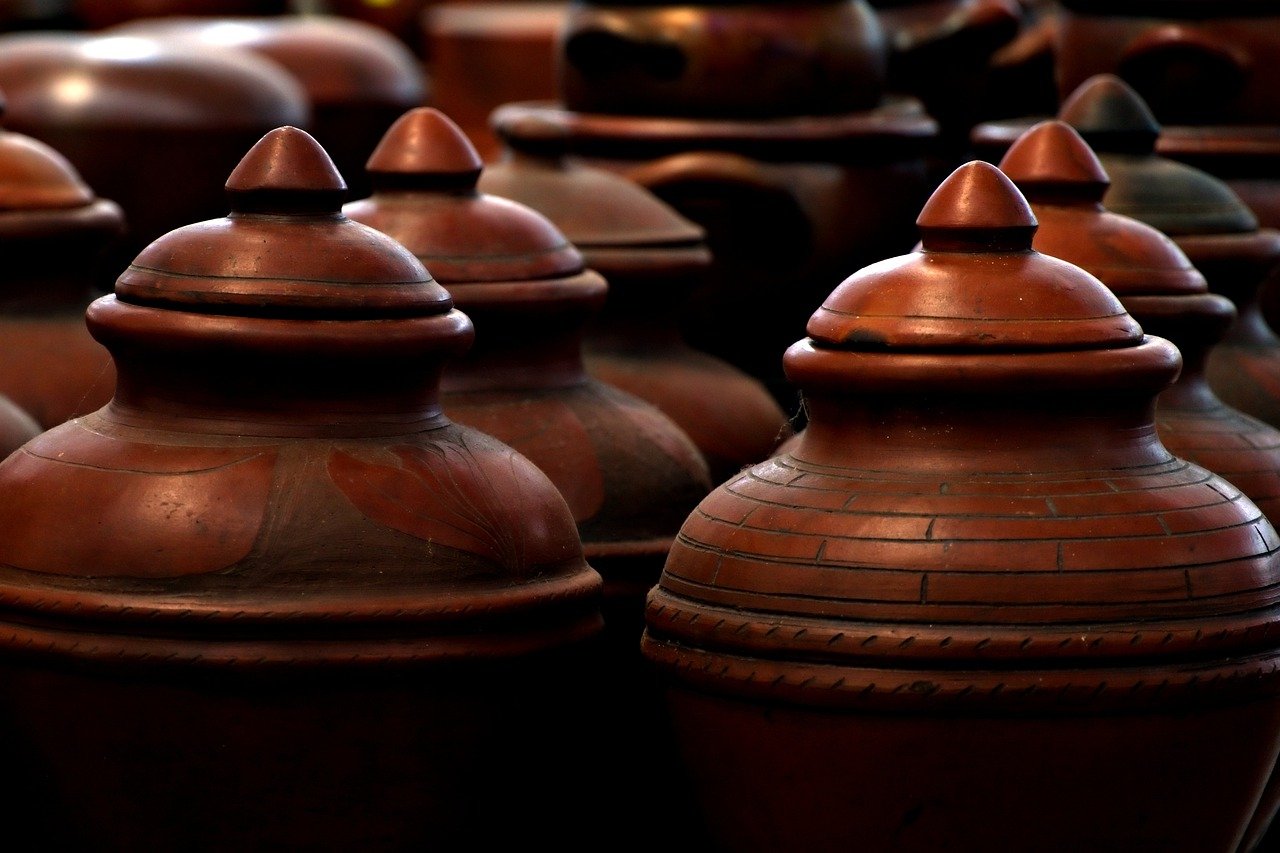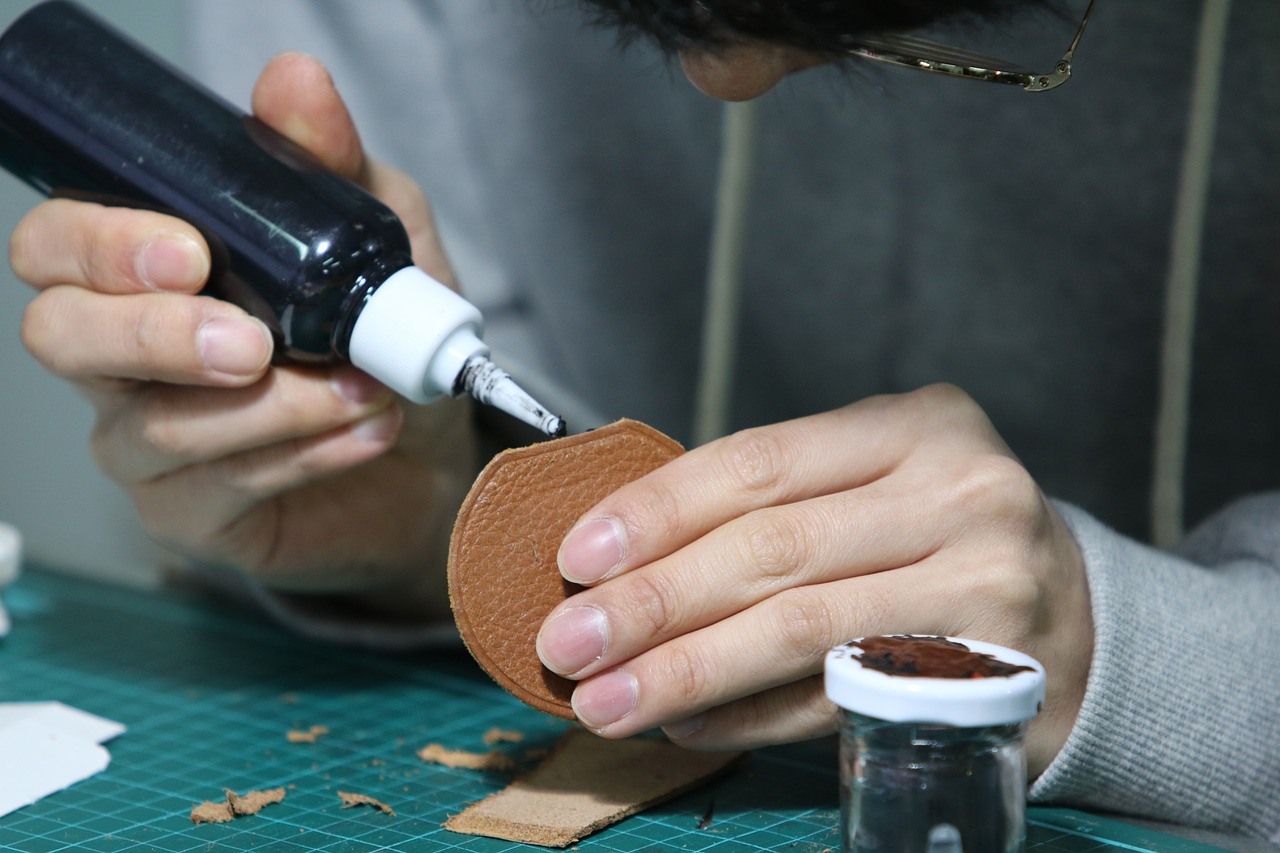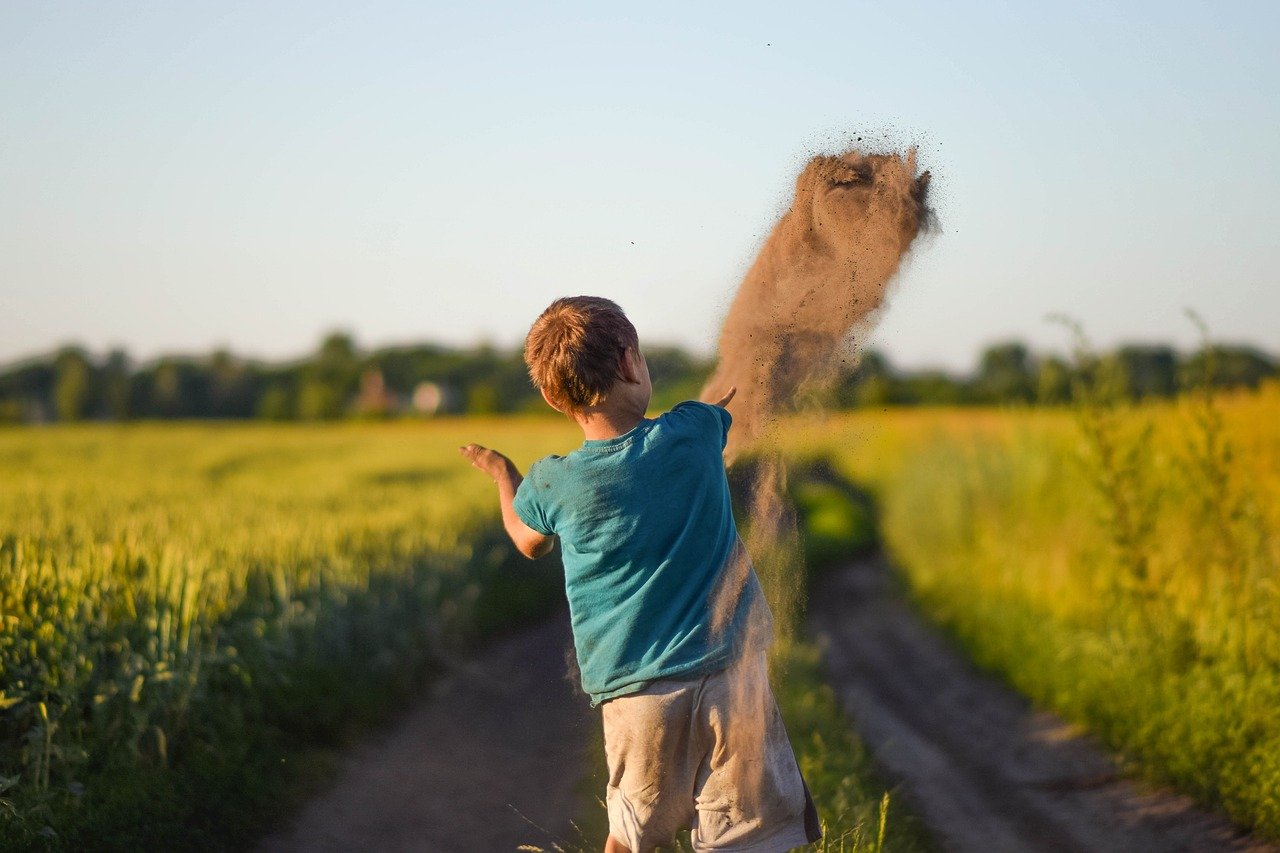Kids' Craft Corner: DIY Decor Projects for Children
Are you ready to dive into the colorful world of crafting with your little ones? Explore fun and creative DIY decor projects that children can enjoy! Crafting is not just an activity; it's a journey of imagination and self-expression. In this article, we’ll uncover various ideas to spark creativity and enhance your child's crafting skills while creating beautiful decorations for their personal spaces. Whether you're looking to brighten up their room or simply want to spend quality time together, these projects are the perfect solution!
Engaging in crafts promotes creativity, fine motor skills, and emotional expression in children. Have you ever noticed how a simple piece of paper can transform into a masterpiece? That's the magic of crafting! When kids create, they learn to think outside the box, solve problems, and express their feelings in a tangible way. From cutting and gluing to painting and decorating, each step enhances their dexterity and coordination, making crafting a fantastic way to develop those essential fine motor skills.
Moreover, crafting provides a safe space for children to express their emotions. Whether they're feeling happy, sad, or even a bit confused, art allows them to channel those feelings into something beautiful. So, why not incorporate DIY projects into your child's routine? The benefits are endless!
Before starting any project, it's important to gather the right materials. Think of crafting supplies as the paint on a canvas; they set the stage for creativity! Here are some essential craft supplies that can inspire creativity and ensure successful DIY decor projects for children of all ages:
- Colored Paper: Perfect for making cards, collages, and more.
- Markers and Crayons: Essential for drawing and coloring.
- Glue and Tape: For sticking everything together!
- Scissors: Safety scissors are a must for younger kids.
- Paints and Brushes: Great for adding color to any project.
- Recyclable Materials: Think cardboard, bottles, and more for eco-friendly crafts.
Wall art can transform a child's room into a vibrant haven of creativity. Imagine your child’s face lighting up as they hang their very own artwork on the wall! Explore easy and fun DIY wall art projects that children can create, enhancing their space with personal touches and artistic flair. One great idea is to make a collage of their favorite things using old magazines and colored paper. This not only decorates their wall but also allows them to express their interests and personality.
Crafting isn't just about decoration; it's also about organization. Have you ever seen a child's craft area in chaos? It can be overwhelming! Discover innovative and fun storage solutions that kids can make to keep their crafting supplies tidy and accessible. For instance, using empty jars to store crayons or decorating shoeboxes to hold art supplies can turn clutter into a charming display. Not only do these projects help with organization, but they also teach kids about responsibility and taking care of their belongings.
Celebrate each season with themed decor projects. The changing seasons offer a fantastic opportunity for kids to express their creativity throughout the year. From making colorful autumn leaves to crafting spring flowers, there are endless possibilities. Children can create decorations that reflect the beauty of each season, allowing them to connect with nature and understand the world around them.
Teaching kids about sustainability through crafting is invaluable. It’s like giving them a superpower to change the world! Learn how to repurpose everyday items into beautiful decor projects, encouraging creativity while promoting environmental awareness. For example, turning old t-shirts into tote bags or using toilet paper rolls to create fun animals can show children that waste can be transformed into something wonderful.
Crafting is a wonderful bonding activity. It’s not just about making things; it’s about making memories! Discover how to involve friends and family in DIY decor projects, fostering teamwork and creating lasting memories through shared creativity. Imagine a weekend where the whole family gathers to create a giant mural or a series of holiday decorations. These shared experiences can strengthen relationships and instill a love for crafting in your children.
Displaying children's artwork can boost their confidence. Have you ever seen a child beam with pride when their creation is showcased? Explore creative ways to showcase their masterpieces at home, turning their creations into cherished decor that reflects their unique artistic expression. You could create a dedicated art wall, use clipboards to display rotating pieces, or even frame their best works. This not only honors their creativity but also encourages them to keep creating!
Q: What age is appropriate for kids to start crafting?
A: Children can start crafting as young as 2-3 years old with simple projects. As they grow, you can introduce more complex tasks.
Q: How can I encourage my child to be more creative?
A: Provide them with a variety of materials, give them freedom to explore, and celebrate their creations, no matter how small!
Q: What are some easy projects for beginners?
A: Simple projects like paper plate masks, painted rocks, or DIY greeting cards are great for beginners!

Benefits of Crafting for Kids
Engaging in crafting activities offers a treasure trove of benefits for children, making it an essential part of their developmental journey. When kids dive into creative projects, they aren't just having fun; they're also enhancing their creativity and imagination. Think of crafting as a magical portal where a child can transform their ideas into tangible creations. Each time they pick up a paintbrush or glue stick, they are not just making art; they are learning to express themselves in unique ways.
One of the most significant benefits of crafting is its ability to improve fine motor skills. As children manipulate small items, cut shapes, and glue pieces together, they are honing their hand-eye coordination and dexterity. This is akin to training for an athlete; the more they practice, the better they become. These skills are crucial not only for crafting but also for everyday tasks such as writing, buttoning shirts, and tying shoelaces.
Moreover, crafting serves as an excellent outlet for emotional expression. Kids often find it challenging to articulate their feelings verbally, but through art, they can convey emotions that words sometimes fail to express. Whether they are creating a colorful collage to celebrate a happy moment or crafting a gloomy painting to reflect sadness, these projects allow them to explore their feelings safely and creatively.
Additionally, crafting fosters problem-solving skills. When children encounter a challenge in their projects—like figuring out how to balance materials or what colors to use—they engage in critical thinking. This process of trial and error teaches resilience and adaptability, qualities that will serve them well throughout their lives.
Crafting also encourages social skills. When kids craft together, they learn to share materials, collaborate on projects, and communicate ideas. This teamwork fosters a sense of community and helps them develop friendships. Imagine a group of kids working together to create a giant mural; not only are they creating art, but they are also building bonds that can last a lifetime.
Lastly, the sense of accomplishment that comes from completing a craft project is invaluable. It boosts a child's self-esteem and confidence, making them feel proud of what they’ve created. Each completed project stands as a testament to their hard work and creativity, reminding them that they are capable of achieving great things.
In summary, the benefits of crafting for kids are abundant and multifaceted. From enhancing fine motor skills and emotional expression to fostering problem-solving abilities and social skills, crafting is a powerful tool in a child's development. So, why not encourage your little ones to dive into the wonderful world of DIY decor? The journey of creativity awaits!

Essential Craft Supplies
Before diving into the exciting world of DIY decor projects, it's crucial to gather the right materials. Having the on hand not only makes the crafting process smoother but also ignites your child's creativity. Think of these supplies as the building blocks of imagination—just like a painter needs brushes and paint, young crafters need their tools to bring their visions to life.
So, what exactly should you stock up on? Here are some must-have items that can inspire countless projects:
- Paper: Various types of paper, such as construction paper, cardstock, and recycled paper, can serve as the canvas for numerous creations.
- Adhesives: Glue sticks, liquid glue, and tape are essential for sticking pieces together. They are the unsung heroes of any crafting project.
- Scissors: A good pair of child-safe scissors is a must for cutting out shapes and designs. They empower your child to take charge of their creations.
- Markers and Crayons: These colorful tools are perfect for adding personal touches and vibrant hues to any project.
- Crafting Kits: Consider investing in themed kits that come with all the necessary supplies for specific projects. They can be a great starting point!
In addition to these basics, incorporating a few fun extras can really elevate your crafting experience:
| Supply | Purpose |
|---|---|
| Stickers | Add fun and flair to projects. |
| Beads | Perfect for jewelry making and embellishing crafts. |
| Fabrics | Great for sewing projects or adding texture. |
| Paints | Ideal for more advanced projects, allowing for artistic expression. |
These supplies not only enhance the crafting experience but also provide opportunities for children to experiment and explore their creative boundaries. By having a well-stocked craft corner, you encourage your child to indulge in their imagination and express themselves freely. Remember, crafting is not just about the end product; it's about the journey of creation, the stories told through their hands, and the joy of discovering new skills.
So, are you ready to turn your home into a vibrant crafting haven? With the right supplies, your child can embark on a crafting adventure that will not only beautify their space but also foster a lifelong love for creativity!
Q: What age is appropriate for starting crafts with my child?
A: It's never too early to start! Simple crafts can be introduced as young as 2-3 years old with supervision. As they grow, you can introduce more complex projects.
Q: How can I encourage my child to be more creative?
A: Give them the freedom to explore different materials and techniques. Encourage them to express their ideas without fear of making mistakes—every creation is a step towards learning!
Q: What should I do if my child loses interest in crafting?
A: Try to introduce new themes or materials to spark their interest again. Sometimes a change of scenery or a new project can reignite their passion for crafting.

Simple DIY Wall Art Projects
When it comes to personalizing a child's room, DIY wall art projects can be a game-changer. Not only do these projects allow children to express their creativity, but they also provide a sense of ownership over their space. Imagine walking into a room where the walls are adorned with bright, colorful pieces created by the little ones who inhabit it! It’s like stepping into a gallery of their imagination.
One of the simplest yet most effective wall art projects is creating a collage of favorite things. Gather old magazines, colored paper, and scissors, and let your child cut out images or words that resonate with them. Once they have a collection, they can arrange and glue them onto a canvas or poster board. This not only enhances their fine motor skills but also sparks conversations about what they love and why. Plus, the end result can be framed and hung up, making it a permanent feature of their room.
Another fun project is to make painted canvas art. All you need are some blank canvases, acrylic paints, and brushes. Encourage your child to experiment with colors and techniques. They can create abstract patterns, or even try their hand at painting their favorite animals or landscapes. The beauty of this project is that there are no strict rules—just let their imagination run wild! Once the paintings are dry, they can be displayed together to create a stunning gallery wall.
If your child enjoys nature, consider making a nature-inspired wall hanging. Collect leaves, flowers, and twigs from outside, and use them to create a beautiful piece of art. Simply glue the natural elements onto a canvas or sturdy paper, and let them dry. This project not only teaches kids about the environment but also gives them a chance to bring a bit of the outdoors inside. You can even add a coat of clear varnish to preserve the artwork for years to come.
For those who love a bit of sparkle, creating a glitter jar art piece can be both fun and mesmerizing. Use an empty jar, fill it with water, and add some glitter and food coloring. Seal the jar tightly and let your child shake it up. They can then hang it on their wall as a decorative piece that doubles as a calming sensory tool. Watching the glitter swirl can be a soothing experience, especially during bedtime.
Lastly, don’t underestimate the power of handprint art. Using non-toxic paint, have your child dip their hands in different colors and press them onto a canvas. This not only creates a vibrant piece of art but also serves as a wonderful keepsake that captures their little hands at a certain age. You can even turn it into a family project by having everyone contribute their handprints!
These simple DIY wall art projects are not just activities; they are opportunities for children to explore their creativity and showcase their unique personalities. By engaging in these crafts, kids not only beautify their spaces but also gain confidence in their artistic abilities. So, gather your supplies and get ready to transform those bare walls into a canvas of imagination!
Q: What materials do I need for these DIY wall art projects?
A: Basic materials include canvases or poster boards, acrylic paints, glue, scissors, old magazines, natural elements like leaves and flowers, and glitter. You can also use any other craft supplies you have on hand!
Q: Can these projects be done with younger children?
A: Absolutely! Many of these projects can be adapted for younger kids with supervision. Just ensure that any materials used are safe and non-toxic.
Q: How can I display my child's artwork?
A: You can frame their creations, use clipboards for easy swapping, or create a dedicated art wall with strings and clips. This way, you can easily change out the artwork as they create new pieces!
Q: What if my child doesn't know what to create?
A: Encourage them to think about their favorite colors, animals, or themes. You can also suggest they look at examples online or in books for inspiration!

Creative Storage Solutions
When it comes to crafting, organization is just as important as creativity. Imagine your child's crafting area as a bustling art studio, where every brush, glue stick, and glitter jar has its own special place. By implementing , you can transform chaos into a beautifully organized space that inspires creativity. Not only do these solutions help keep supplies tidy, but they also encourage kids to take responsibility for their materials, fostering a sense of ownership and pride in their crafting projects.
One fantastic way to start is by using repurposed containers. Old jars, boxes, and even tin cans can be transformed into stylish storage options. For instance, you can decorate a mason jar with colorful washi tape or paint it with fun designs. These jars can hold everything from brushes to beads. It's like giving a second life to these items while teaching kids about sustainability!
Another great idea is to create a craft caddy. This can be as simple as a plastic tote or an old basket, which can be filled with essential supplies. To make it even more exciting, let your child personalize their caddy with stickers or paint. This not only makes it functional but also adds a personal touch that makes crafting even more enjoyable.
For larger items, consider using hanging storage solutions. A pegboard mounted on the wall can serve as an excellent way to display tools and supplies. Kids can hang scissors, ribbons, and other materials within reach, making it easy to grab what they need while keeping the workspace clutter-free. Plus, it turns the wall into a mini art display, showcasing their tools as part of the decor!
If you're looking for a more structured approach, a simple drawer organizer can work wonders. You can use small bins or dividers to categorize supplies such as crayons, markers, and stickers. This way, everything is easy to find, and clean-up becomes a breeze. Just think of it as creating a treasure chest where every item is a gem waiting to be discovered!
Lastly, don't forget about the power of labels. Labeling boxes or containers can help children learn where things belong, making it easier for them to put items back after use. You can use fun fonts and colors to make the labels visually appealing. It's a simple step that can significantly enhance organization and instill a sense of responsibility in your little ones.
Incorporating these creative storage solutions not only enhances the crafting experience but also teaches valuable life skills. As children learn to manage their supplies, they develop a sense of discipline and organization that will benefit them in many areas of life. So why not dive into these fun projects together? You might find that organizing can be just as enjoyable as the crafting itself!
Q1: What are some inexpensive storage solutions for kids' craft supplies?
A1: Inexpensive options include repurposed jars, shoe boxes, and plastic containers. You can also use old baskets or caddies to store supplies effectively.
Q2: How can I encourage my child to keep their crafting area organized?
A2: Involve them in creating personalized storage solutions and make organizing a fun activity. Use labels and encourage them to put things back after use.
Q3: What are some creative ways to display my child's artwork?
A3: Consider creating a rotating gallery wall, using clipboards or frames to showcase their work. You can also hang a string with clothespins to easily swap out new creations.

Seasonal Decor Ideas
Transforming your child's space with seasonal decor is not only a fun activity but also a fantastic way to teach them about the changing seasons. Each season brings its own unique colors, themes, and festivities, providing endless opportunities for creativity. Imagine the joy on your child's face as they craft decorations that reflect the beauty of autumn leaves or the freshness of spring flowers! These projects can be simple yet impactful, allowing kids to express themselves while enhancing their surroundings.
For instance, during fall, children can create beautiful leaf garlands using colorful paper or real leaves. All they need are some scissors, a hole punch, and string to string them together. This project not only beautifies their room but also encourages them to explore the outdoors. Similarly, in winter, kids can make snowflake ornaments from paper or even use cotton balls to create fluffy snow scenes. The act of crafting these decorations can ignite their imagination and spark conversations about the season's unique characteristics.
As we move into spring, why not let your kids create their own flower pots? Using plain terracotta pots, they can paint them in vibrant colors and add their personal touch with stickers or drawings. Planting flowers in these pots can teach them about nature and responsibility. Finally, during summer, kids can craft beach-themed decor, like seashell picture frames or sun catchers that reflect the bright sunlight. These projects not only beautify their personal spaces but also create lasting memories of the seasons spent together.
To give you a clearer idea of how to approach these seasonal projects, here's a simple table outlining ideas for each season:
| Season | Project Idea | Materials Needed |
|---|---|---|
| Fall | Leaf Garland | Colorful paper, scissors, hole punch, string |
| Winter | Snowflake Ornaments | Paper, scissors, cotton balls, glue |
| Spring | Decorated Flower Pots | Terracotta pots, paint, stickers |
| Summer | Beach-Themed Decor | Seashells, picture frames, glue |
Engaging in these seasonal decor projects not only enhances your child's crafting skills but also helps them develop a deeper appreciation for the world around them. So, gather your supplies, roll up your sleeves, and let the crafting adventures begin! The memories you create together will be cherished for years to come.
Q: What age is appropriate for kids to start crafting seasonal decor?
A: Children as young as 3 can start with simple projects, while older kids (6+) can handle more complex tasks that require scissors and glue.
Q: How can I ensure safety while my child is crafting?
A: Always supervise young children, use child-safe materials, and keep sharp tools out of reach until they are old enough to use them safely.
Q: Are there any eco-friendly materials I can use for crafting?
A: Yes! Consider using recycled paper, natural materials like leaves and twigs, and non-toxic paints to promote sustainability.
Q: Can crafting help with my child's development?
A: Absolutely! Crafting enhances fine motor skills, boosts creativity, and provides an outlet for emotional expression.

Recycled Craft Projects
In today's world, where sustainability is more important than ever, offer a fantastic opportunity for kids to unleash their creativity while also learning about the environment. Imagine turning everyday items that would typically end up in the trash into something beautiful and functional! Not only does this practice encourage resourcefulness, but it also instills a sense of responsibility towards our planet. So, what can your little ones create with some old newspapers, plastic bottles, and cardboard boxes? Let's dive into some exciting ideas!
One of the easiest and most fun projects is making upcycled planters. Kids can take an old plastic bottle, cut it in half, and paint it in vibrant colors. Fill it with soil and plant some seeds, and voilà! They have their very own garden. This project not only teaches them about gardening but also about the importance of reusing materials. Plus, it’s a great way to add a splash of green to their room!
Another fantastic idea is to create art from scrap paper. Gather bits of colored paper, magazines, and newspapers, and let the kids go wild. They can create collages, greeting cards, or even unique wall art. This activity not only fosters creativity but also helps improve fine motor skills as they cut, glue, and arrange their materials. The best part? They can express their feelings and ideas through their art, making it a meaningful experience.
To inspire even more creativity, here’s a quick table outlining some common household items and potential craft projects:
| Household Item | Craft Project Idea |
|---|---|
| Egg Cartons | Create colorful caterpillars or flower decorations. |
| Toilet Paper Rolls | Make binoculars or fun animal puppets. |
| Glass Jars | Turn them into lanterns or storage containers. |
| Old Clothes | Transform them into tote bags or stuffed toys. |
Additionally, a fun way to engage kids in the crafting process is to organize a recycled craft day with friends or family. Everyone can bring their own materials, and together, they can brainstorm ideas and create something special. This not only fosters teamwork but also allows for sharing unique perspectives on how to use common items creatively.
Lastly, don't forget to encourage your kids to showcase their recycled crafts! Whether it’s displaying their new planters on the windowsill or hanging their collages on the wall, showing off their creations can boost their confidence and inspire them to keep crafting. Remember, crafting isn’t just about making something pretty; it’s about the journey of creation and the lessons learned along the way.
Q: What materials are best for recycled crafts?
A: Almost anything can be used! Common materials include cardboard, plastic bottles, old clothes, glass jars, and scrap paper.
Q: How can I encourage my child to get involved in crafting?
A: Start by setting up a crafting space with all the supplies. Encourage them to explore their ideas and let them lead the projects.
Q: Are recycled crafts safe for young children?
A: Yes, but supervision is important, especially when using scissors or other tools. Always ensure that the materials used are safe and appropriate for their age.

Crafting with Friends and Family
Crafting is more than just a fun pastime; it's a wonderful bonding activity that brings friends and family together. Imagine a cozy afternoon where laughter fills the air, and creativity flows freely as everyone works on their individual projects or collaborates on a shared masterpiece. Whether it's a rainy day or a festive gathering, crafting can transform ordinary moments into extraordinary memories. But how do you get started? Here are some ideas to inspire your next crafting session!
First off, consider setting up a crafting station that caters to all ages. This could be a simple table covered with newspapers or a dedicated craft room filled with supplies. Stock it with essential materials like paper, glue, scissors, and paints, but also include some unique items like beads, fabric scraps, or recycled materials. The goal is to create an inviting space that encourages everyone to unleash their creativity.
Next, think about the types of projects you want to tackle together. Here are a few ideas that can engage everyone:
- Friendship Bracelets: These are perfect for all ages and can be made using colorful threads or beads. Each person can create a unique design to share with friends or family members.
- Decorative Picture Frames: Using cardboard, paint, and embellishments, everyone can design their own frame to showcase family photos or their artwork.
- Seasonal Decorations: Crafting decorations for upcoming holidays can be a fun way to celebrate together. Think about making paper snowflakes for winter or colorful flower pots for spring.
Moreover, don't forget the importance of teamwork! You can work on a large project together, such as a mural or a garden decoration. This not only fosters collaboration but also allows everyone to contribute their unique skills. For example, one person might excel at drawing while another is great with colors. When they come together, the end result can be a beautiful representation of everyone's creativity.
Lastly, make sure to take breaks and enjoy some snacks while you craft. Sharing a meal or a treat can enhance the experience, making it even more enjoyable. Plus, it gives everyone a chance to share their thoughts and ideas about the projects they're working on. The key is to keep the atmosphere relaxed and fun, allowing creativity to flourish without pressure.
In conclusion, crafting with friends and family is a fantastic way to strengthen bonds while exploring creativity. It's about the experience rather than the end product, so embrace the messiness and imperfections that come with creating together. Who knows? You might just discover hidden talents and create cherished memories that last a lifetime!
| Question | Answer |
|---|---|
| What age is appropriate for crafting with kids? | Crafting can be enjoyed by children as young as 2 or 3, but the complexity of the projects can vary based on age. Always choose age-appropriate materials. |
| How can I keep crafting organized? | Use labeled bins or baskets to store supplies. Encourage kids to clean up after each crafting session to maintain an organized space. |
| What if I don’t have any craft supplies? | Get creative with household items! Recycled materials like cardboard boxes, old magazines, and fabric scraps can be transformed into fantastic crafts. |

Showcasing Kids' Artwork
Every parent knows that the moment a child creates a piece of art, it's not just a drawing or a painting; it's a masterpiece that deserves to be celebrated. Showcasing kids' artwork is like creating a gallery of their imagination and creativity right in your home. It's a beautiful way to acknowledge their efforts and boost their confidence. But how do you turn those countless drawings and crafts into an attractive display? Let’s dive into some creative ideas that will not only showcase their art but also enhance the decor of your living space.
One popular method is to create a dedicated art wall. Choose a wall in your home, perhaps in the hallway or their bedroom, and transform it into an art gallery. Frame their best pieces using colorful frames or even DIY frames made from cardboard. This not only makes the artwork pop but also adds a personal touch to the decor. You can rotate the artwork regularly, keeping the display fresh and exciting. Imagine walking down a hallway where every step reveals a new creation!
If you're short on wall space, consider using a clothesline display. Hang a string or wire across a wall or in a corner of the room and use clothespins to clip their artwork. This method is playful and allows for easy swapping of new pieces as they create them. It’s like having a mini-exhibition that changes with their artistic journey. Plus, it’s a fantastic way to include three-dimensional crafts, like handmade ornaments or sculptures, in the mix.
For a more organized approach, you can create an art book. Collect their artwork and photographs of larger projects, and compile them into a scrapbook or photo book. This not only preserves their art but also creates a lovely keepsake that you can look back on together in the years to come. Imagine flipping through the pages, reminiscing about their artistic phases and the stories behind each piece!
Another innovative idea is to turn their artwork into functional items. You can scan or take high-quality photos of their best creations and have them printed on items like throw pillows, mugs, or even tote bags. This way, their art becomes a part of your daily life. It’s like wearing a piece of their creativity wherever you go!
Lastly, don't forget to involve your child in the process. Discuss with them how they would like their art to be displayed. This not only makes them feel valued but also teaches them about curation and presentation. Encourage them to choose their favorite pieces and explain why they love them. This dialogue can deepen their connection to their creations and foster a sense of pride.
In summary, showcasing kids' artwork is a wonderful way to celebrate their creativity. Whether it’s through a dedicated art wall, a playful clothesline, a cherished art book, or turning their creations into functional items, the possibilities are endless. Each method not only beautifies your home but also instills a sense of accomplishment in your child. So, gather those masterpieces and start creating your very own art gallery today!
Q: How can I preserve my child's artwork for the long term?
A: Consider digitizing the artwork by scanning or photographing it. This way, you can create a digital archive and even print photo books to keep the memories alive without taking up physical space.
Q: What should I do with artwork that I can't display?
A: You can create a storage box or portfolio for their art. Regularly go through it with your child to decide what to keep, recycle, or transform into new projects.
Q: How can I encourage my child to create more art?
A: Set up a dedicated crafting space with all the necessary supplies. Encourage them to explore different mediums and styles, and most importantly, celebrate their efforts regardless of the outcome!
Frequently Asked Questions
- What are the benefits of crafting for kids?
Crafting offers a multitude of benefits for children. It boosts their creativity, enhances fine motor skills, and provides a healthy outlet for emotional expression. Engaging in DIY projects helps kids develop problem-solving skills and encourages them to think outside the box, all while having fun!
- What essential craft supplies should I have at home?
Having the right supplies can make all the difference in your child's crafting experience. Essential items include scissors, glue, markers, colored paper, and various decorative materials like stickers and beads. Don't forget to stock up on recycled materials like cardboard and fabric scraps, which can inspire even more creativity!
- Can you suggest some simple DIY wall art projects?
Absolutely! Kids can create beautiful wall art using items like canvas, paints, or even paper plates. Simple projects include painting their favorite animals, creating a collage of family photos, or making a colorful handprint tree. These projects not only beautify their space but also allow for personal expression!
- How can kids create fun storage solutions?
Kids can make their own storage solutions using shoeboxes, jars, or even old containers. Decorating these items with paint, stickers, or fabric can turn dull storage into fun decor! This not only helps keep their supplies organized but also encourages them to take pride in their creations.
- What are some seasonal decor ideas for kids?
Seasonal decor is a fantastic way for kids to express their creativity throughout the year! For spring, they can create flower garlands, while in autumn, they might enjoy making leaf wreaths. Winter could involve crafting snowflakes, and summer can be filled with colorful beach-themed decorations. The possibilities are endless!
- How can we teach kids about recycling through crafts?
Recycling can be fun with crafts! Encourage kids to use everyday items like plastic bottles, old magazines, and cardboard boxes to create new decor. For example, a plastic bottle can become a bird feeder, and cardboard can be transformed into a mini robot. This teaches them the importance of sustainability while sparking their creativity!
- What are some ways to involve friends and family in crafting?
Crafting can be a wonderful group activity! Organize a craft day where friends and family come together to create projects. You can set up different crafting stations, allowing everyone to try their hand at various activities. This not only fosters teamwork but also creates lasting memories!
- How can we showcase our kids' artwork at home?
Displaying your child's artwork can be a great confidence booster! You can create a gallery wall in their room or the hallway using frames or clipboards to easily swap out pieces. Alternatively, consider making a scrapbook or a rotating display on a bulletin board. This way, their creativity is celebrated and cherished!



















